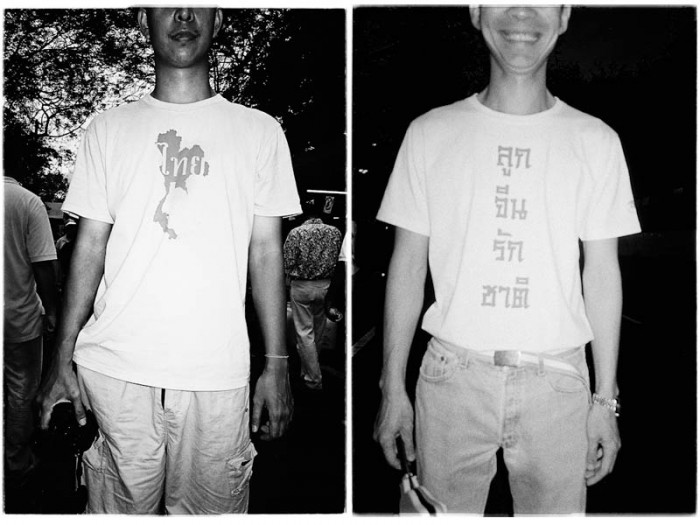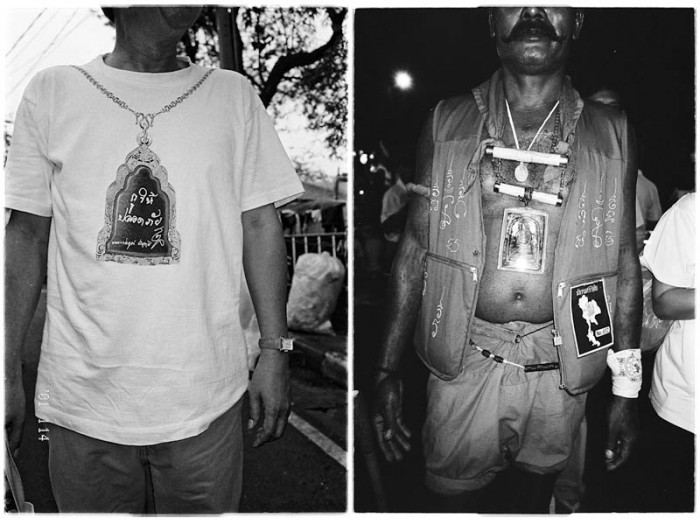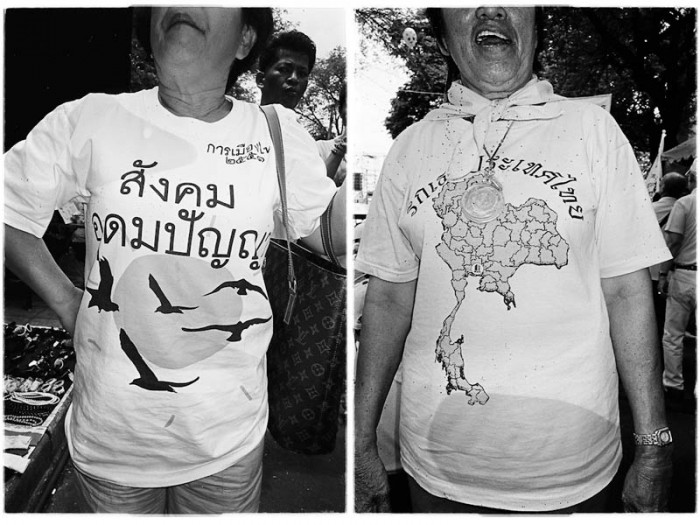
© Miti Ruangkritya
Miti Ruangkritya is a young Thai photographer with some interesting projects on his website. I was particularly drawn to “Thai Politics,” 1 a three-part series (as he says) “regarding the ongoing political tension in Thailand.” Perhaps it’s the general lack of politically-motivated photography in Japan, but it was refreshing to see these photos taking the pulse of people through their t-shirts. As a point of reference from Japan, the late and very great Yasuhiro Ishimoto did a similar project in the late 90s, shooting the backs of pedestrians in Shibuya. This work was published as a book, “Shibuya, Shibuya,” 2 which I can recommend very highly.

© Miti Ruangkritya

© Miti Ruangkritya
